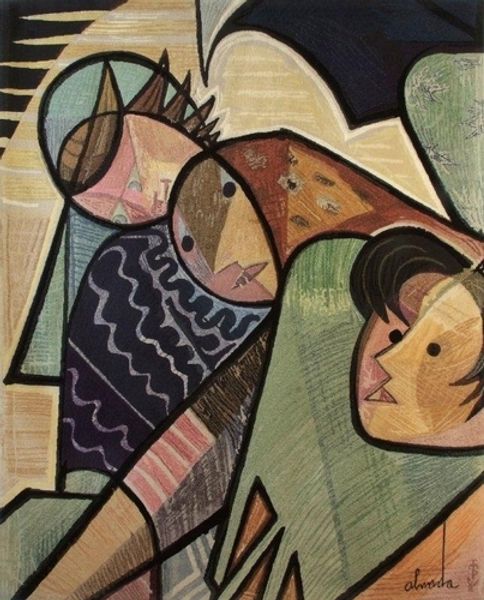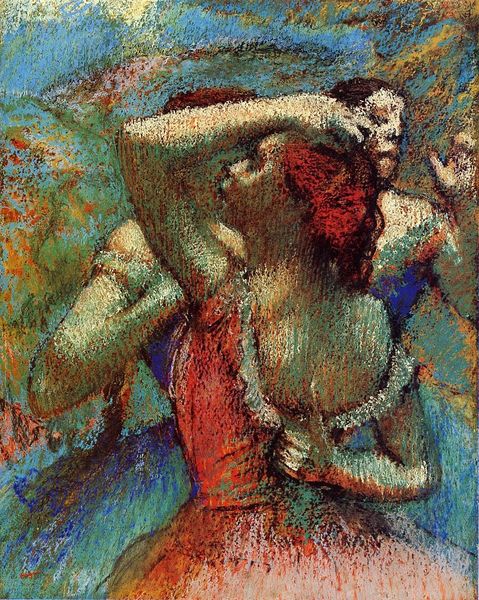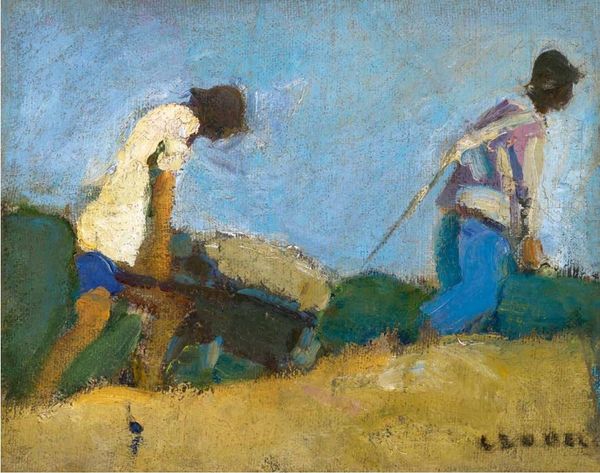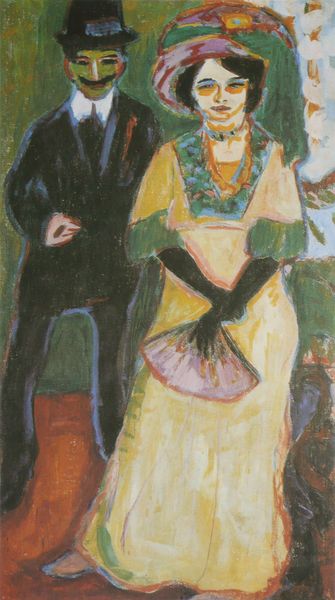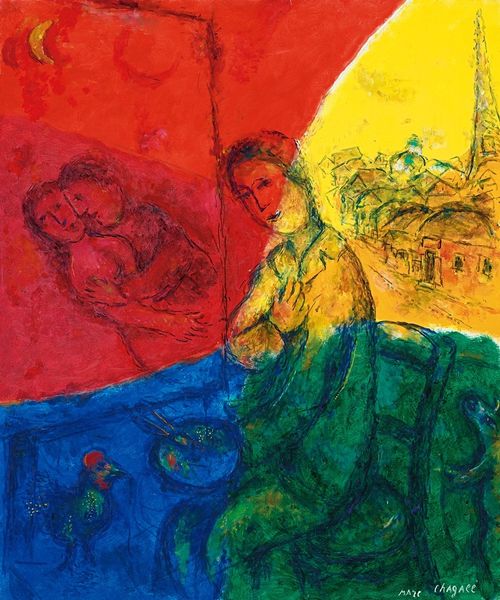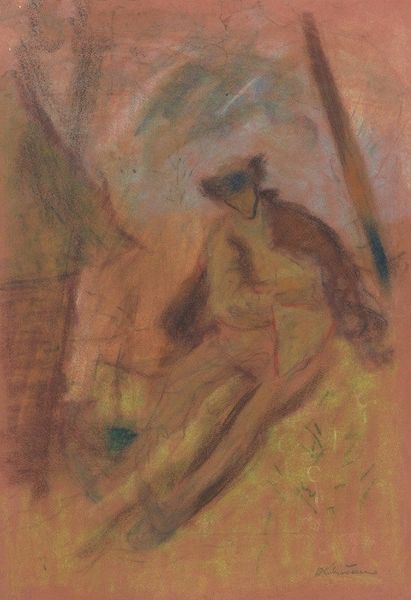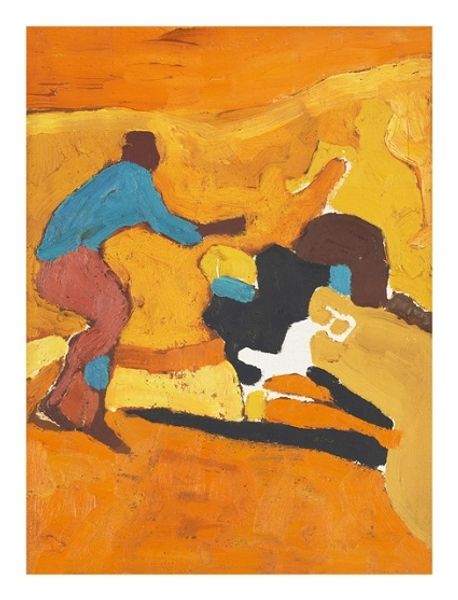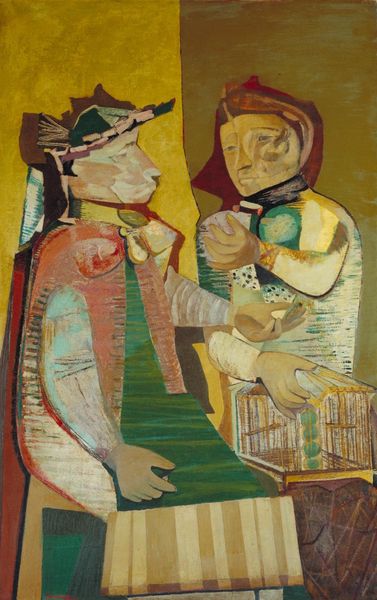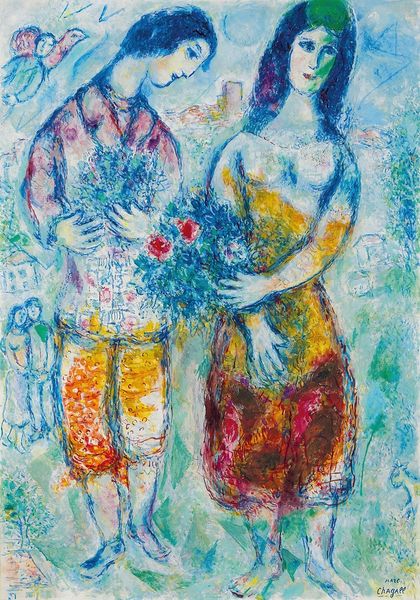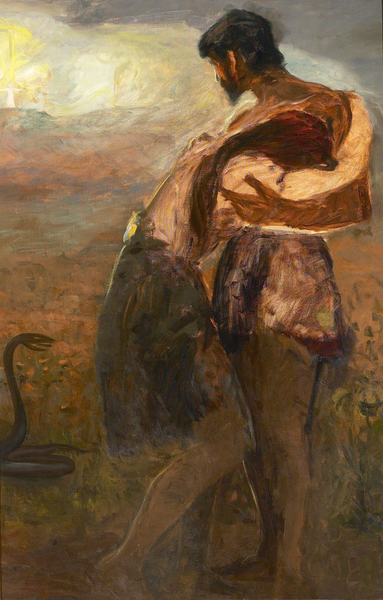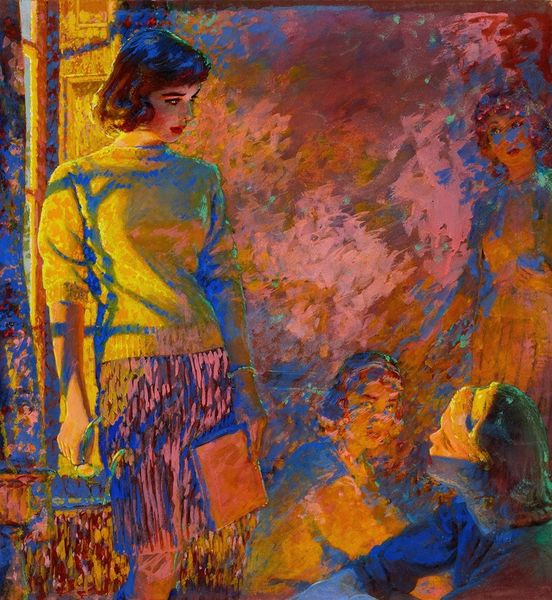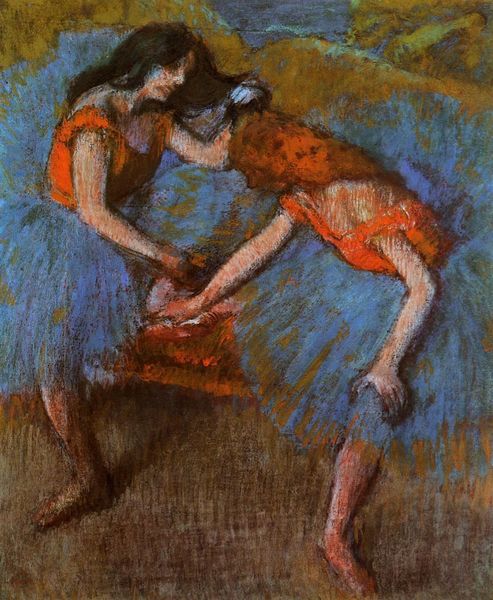
painting, oil-paint, impasto
#
portrait
#
figurative
#
painting
#
oil-paint
#
landscape
#
impressionist landscape
#
figuration
#
oil painting
#
impasto
#
naive art
#
genre-painting
#
post-impressionism
#
expressionist
Copyright: Public Domain: Artvee
Editor: This is Van Gogh's "Eglogue En Provence – Un Couple D’amoureux," painted in 1888 with oil paints. It feels so… private. The colors are bold, but the way they're embracing by the sea feels very intimate. What stands out to you most about this work? Curator: I'm struck by the deliberate construction of this scene, particularly how Van Gogh uses this "genre-painting," as it’s sometimes categorized, to explore tensions between rural idealization and social realities. Consider the figures: are they truly carefree lovers, or do they embody societal expectations and roles prescribed for them? Editor: So, it's not necessarily a simple, romantic moment? Curator: Exactly. It's crucial to examine the artwork within the context of late 19th-century France. How might anxieties about social change, urbanization, and the decline of agrarian life influence Van Gogh's depiction of this couple in Provence? The very fact that it seems "private," as you put it, makes me wonder what public function that privacy serves, especially in the painting itself but also the contemporary viewer's understanding. Editor: I hadn’t considered that at all. It challenges my initial view. The figures do seem staged. Curator: Note the composition and Van Gogh’s chosen location; an idyllic location. He wasn’t just capturing a spontaneous moment but rather commenting on the political landscape. Van Gogh’s brother, Theo, sold some works via galleries – the paintings and the setting become products subject to social values and norms. Considering this fact helps deepen our comprehension. Editor: It gives a whole new perspective when you consider how art, even something that appears intimate, plays a part in the public eye and reflects the social dynamics of its time. Thank you. Curator: Absolutely! It reminds us to look beyond the surface and ask what social forces might be at play, shaping not only the artist's vision but also our own interpretation.
Comments
No comments
Be the first to comment and join the conversation on the ultimate creative platform.
